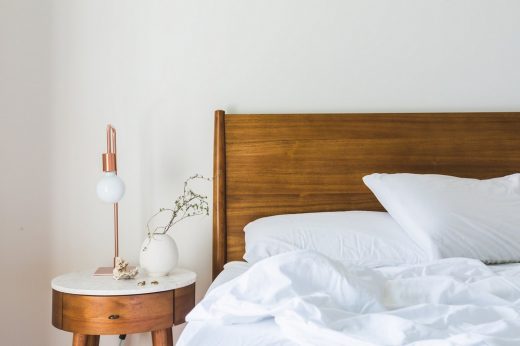5 tips to improve air quality in buildings advice, Property health tips, Indoor living guide
5 Tips to Improve Air Quality in Buildings
25 July 2020
It goes without saying; that the larger portion of our lives is spent indoors. In the U.S., for instance, the average American is estimated to spend up to 93% in confined spaces. Of this, 87% accounts for time spent inside buildings, whereas 6% is spent inside automobiles according to the EPA. If these alarming statistics were anything to go by, indoor settings need to be as hygienic, healthy, and comfortable as possible.
Now, the air we breathe while indoors may not exactly be healthy. This is because dust, pollen, mold spores, and other allergens are bound to get inside the house through various openings such as the windows, vent openings, and doors. Exhaust gases from indoor appliances such as the water heater and the furnace, as well as fumes from the kitchen can also wreak havoc if a proper ventilation system is not in place.
In line with these and more factors, indoor air pollution is a common challenge in many buildings. But thanks to innovation and technology, there are various ways to ensure that high-quality air is circulating in your home or commercial premises. With this having been said, here are a few ways to improve air quality in your home or commercial building.
5 Tips to Improve Building Air Quality
- Keep the Indoors Clean
A clean and tidy house is not only good for your health, but it also creates a happy living environment. Dirt in the house can be attracted to furniture, beddings, carpets, and rugs. Since dust particles are so minute, they can get inside the building through the various openings and entry points, eventually settling on various surfaces. Whenever some turbulence occurs in your indoor settings, the settled dust particles are disturbed and start flowing inside the building carried by indoor air. The good thing about routine housekeeping is that it cuts down the accumulation of dirt and dust, thus improving your indoor air quality.
To the homeowners, be sure to clean your clothes, bedding, drapes, carpets, and rugs as often as possible to keep off the dust mites that might be lurking in your house. Dust mites mostly linger in the fabrics and they cause uncomfortable irritation in the nose and throat. If you have any pets in the house, ensure you keep them off of your beddings and couches to lower the buildup of hair and fur, which double up as dirt and allergens to some people. Regularly vacuuming your carpeting, dusting upholstery, and wiping surfaces can help keep the air in your home fresh, clean, and healthy.
2. Keep the AC Serviced
Needless to mention, the air conditioner helps you to beat the heat in your home or business premises during warm days. However, many AC units do so by sucking air from outside, cooling it, and circulating it inside the building. The unit also sucks the warmer air from the room into the outdoor environment. Now, as air is sucked into your home or commercial indoor space, it passes through a filter where dust particles, mold spores, allergens, and other types of debris are trapped. This only means that over time, these filters get dirty, clogged, or even damaged enough to let pollutants through into your home!
As far as indoor air quality is concerned, dirty filters are the last thing you want to deal with. This makes it important to have your AC system serviced regularly and the filters cleaned at least twice a month or replaced depending on the manufacturer’s recommendation. If you take a look at the air filters guide from HPS, you will notice that some are specifically designed for air purifiers, dehumidifiers, and other HVAC systems. From carbon filters to HEPA, UV filters, ionic, electrostatic, and pleated air filters, there’s a wide range of options to pick from out there, including standalone variants. As far as air quality is concerned, the most important thing is to know when to clean or replace your air filters. Prompt cleaning and replacement of air filters will also help preserve your air conditioner efficiency. Neglecting them, on the other hand, will only lead to clogging, which reduces the airflow and makes it harder for your AC to produce cool clean air.
3. Add Some Indoor Plants
Now, the air inside our homes can be much more polluted than the outdoor air, hence increasing the risk of health problems. Poor indoor air quality has been associated with negative health effects like headaches, eye problems, and throat irritation. Maintaining good air quality is part of making your home comfortable and healthy for your family. Selecting the right house plants can eventually do wonders to your home by improving air quality while enhancing some décor. But did you know some plants are natural air filters? Well, some air purifying plants like Chrysanthemum, weeping fig, English ivy, bamboo palm, Barberton daisy, and Chinese evergreen, are excellent choices for pulling harmful contaminants out of the air. They help absorb potentially harmful chemicals and gases from the air, making our homes and offices healthier.
4. Fresh Air
Fresh air is good and healthy both for your mind and body. Breathing fresh air is essential for your wellbeing. Without proper ventilation the indoor air gets stale, and the pollutants in the air end up being breathed into the body. The lack of fresh air in your house can cause diseases such as asthma and lung disease. Even as you take proper care of your AC, the simplest way to flush out the stale air from your house is by opening the windows and doors. It allows the stale air out, letting in fresh air into your home.
5. Start a No-Smoking-Policy
For quite a while, cigarette smoking has been a leading cause of indoor air pollution in many homes. It not only affects the smoker, but it also jeopardizes the health of the people nearby. Once you smoke in the house, the smoke does not just remain in the air. Rather, the deadly chemicals are absorbed in the beddings, carpets, drapes, and furniture. This also leads to unpleasant odors in the respective room.
Moreover, the practice can also trigger a false fire alarm if you have a smoke detector installed in the building. The best way to put an end to this menace is to instill a no-smoking policy in your home or office building. Smoking indoors should be avoided as much as possible to ensure the air in your house is safe both for you and your family. If you ever have a guest who smokes, you can ask them kindly to do it outside and away from the house.
From dust to pollen, mold spores, kitchen smoke, and fumes from household chemicals, there’s a wide range of indoor air pollutants. Without observing the right measures, these can hugely affect the quality of the air we breathe in our homes, offices, and commercial buildings. The above are just a few ways one can put an effort into making indoor air better, fresher, and healthier.
Comments on this guide on 5 Tips to Improve Air Quality in Buildings article are welcome.
Building Articles
Contemporary Property Articles – architectural selection below:
Property
Comments / photos for the 5 Tips to Improve Air Quality in Buildings page welcome







